Manhasset and the 1906 Vanderbilt Cup Race
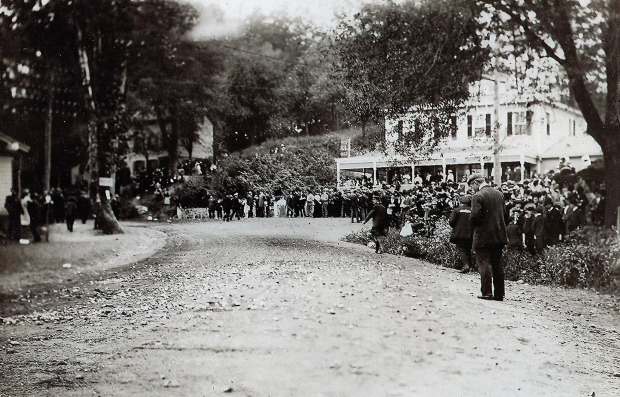
Blank Slate Media has requested images of Manhasset during the 1906 Vanderbilt Cup Race for their upcoming Guide to Manhasset publication. Below are several choices for the Guide.
Enjoy,
Howard Kroplick
At the turn of the 20th century the superiority of European automotive craftsmanship cast a long shadow over America’s fledgling car industry. To encourage American automobile manufacturers to challenge European quality, 26-year old William K. Vanderbilt Jr., heir to a railroad fortune and a pioneer race car driver, organized America’s first international road race, modeled after those held in Europe. The six Vanderbilt Cup Races held on Long Island from 1904 to 1910 were the greatest sporting events of their day. These colorful, exciting, and dangerous races drew huge crowds from 25,000 to over 250,000 spectators.
1906 Course
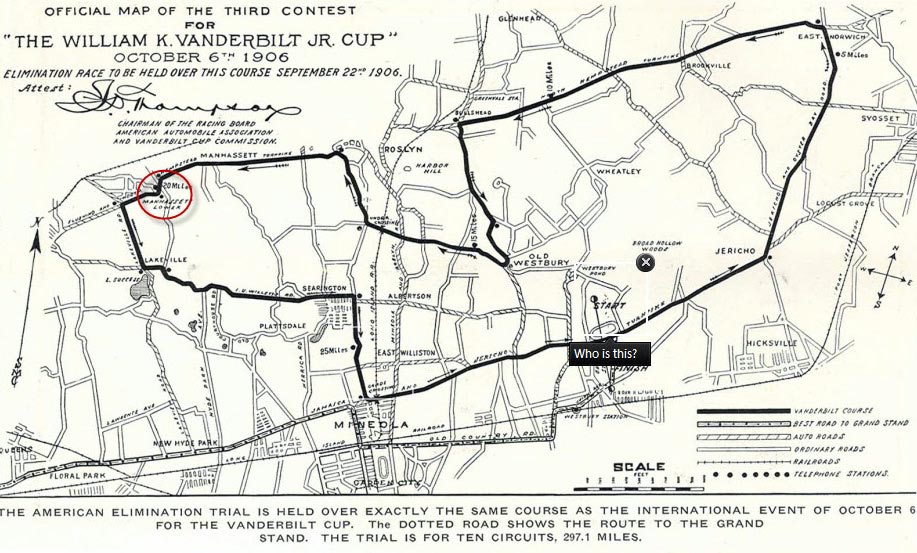
1906 was the only time the Vanderbilt Cup Races ran through Manhasset Valley. The Flushing-North Hempstead Turnpike (now Northern Boulevard) was the main business street of the village in 1906 prior to the extension of the LIRR to Plandome Road.
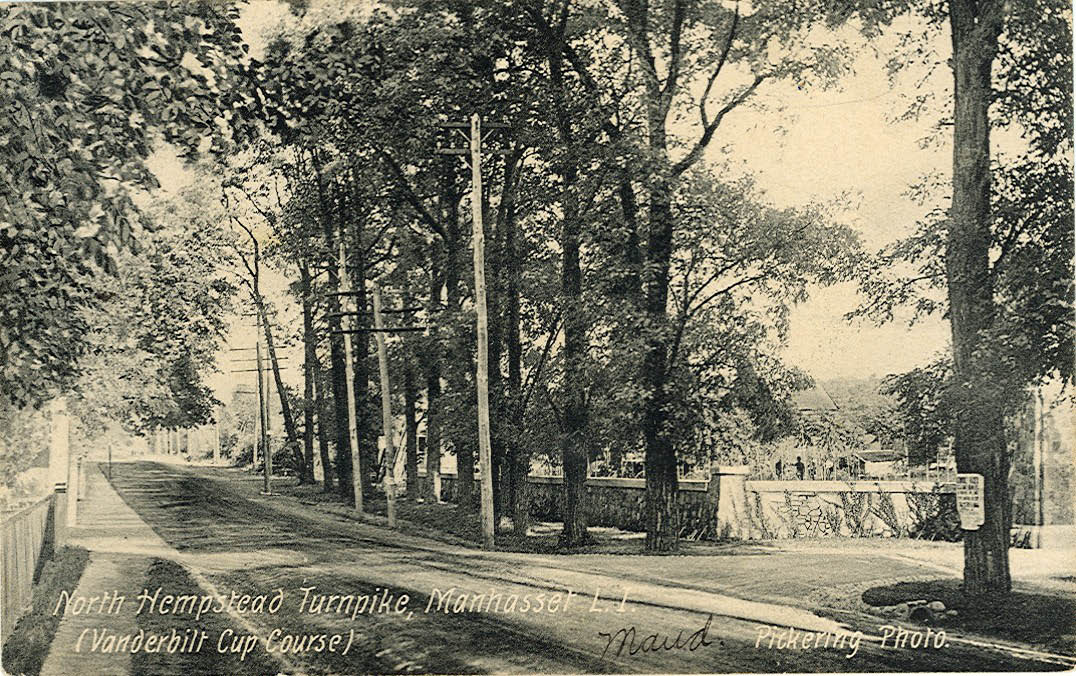
Photo taken by Roslyn photographer William Pickering.
Spinney Hill, Manhasset
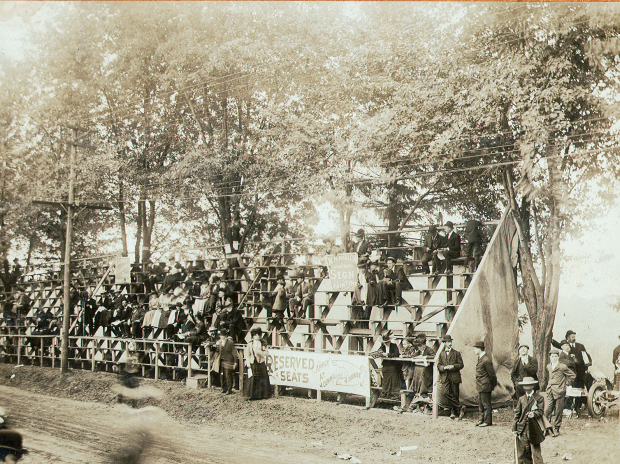
The primary grandstand for the 1906 Vanderbilt Cup Race was at the Start/Finish Line on Jericho Turnpike in Westbury. As seen here, a second grandstand with a capacity of 500 spectators was built in Manhasset.
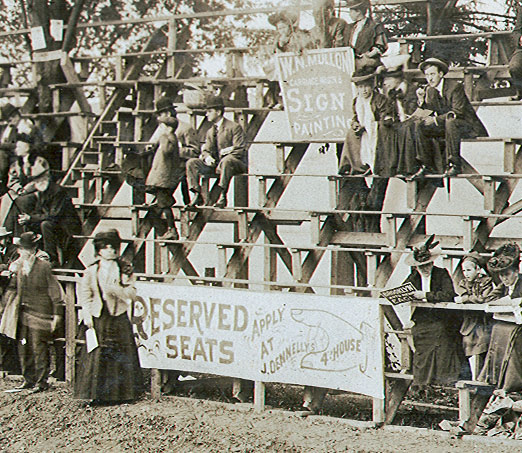
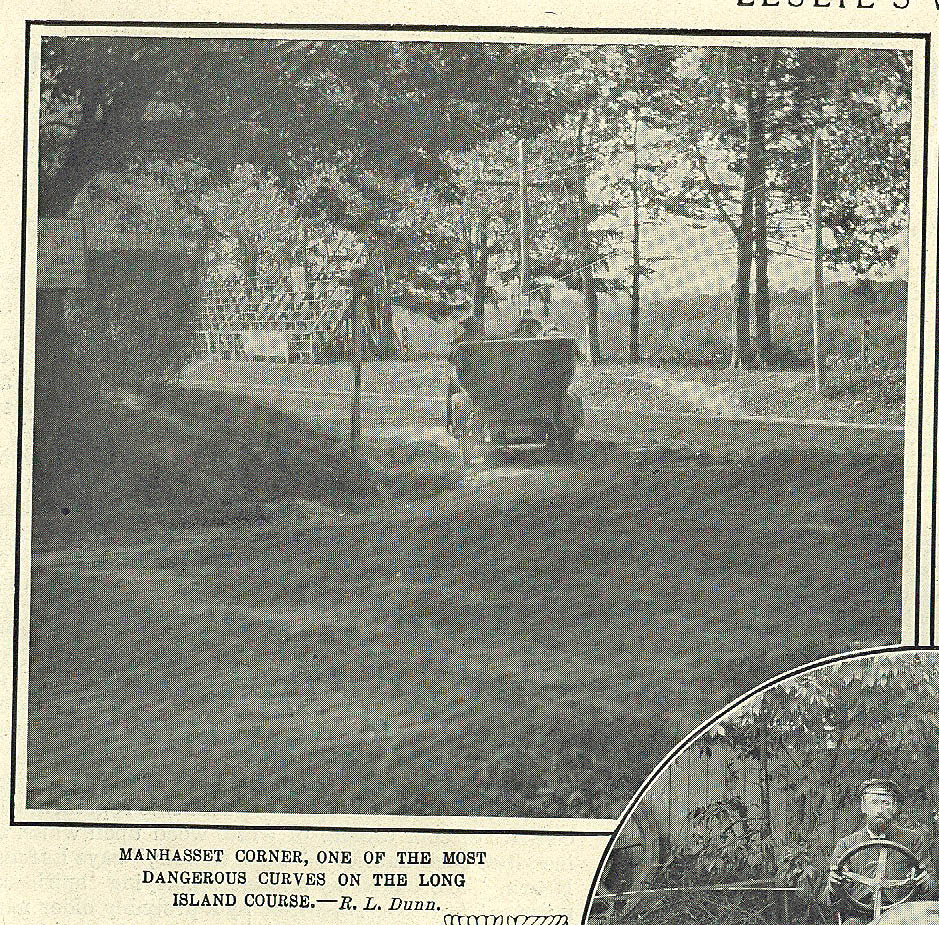
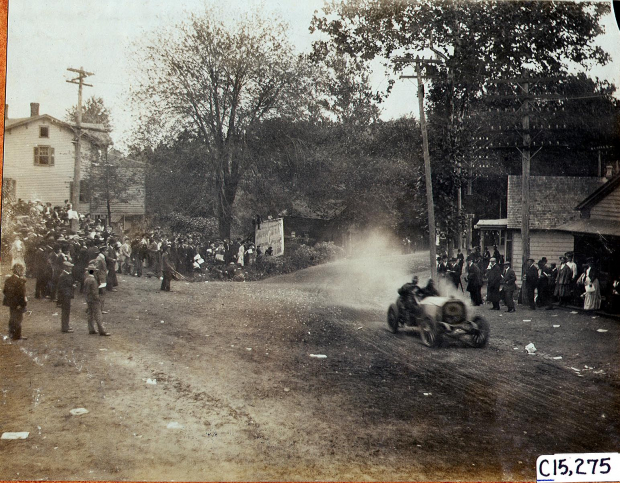
Another exciting location to watch the 1906 Vanderbilt Cup Race was Manhasset Hill (Spinney Hill), located now at the intersection of Northern Boulevard and East Shore Road/Community Drive.
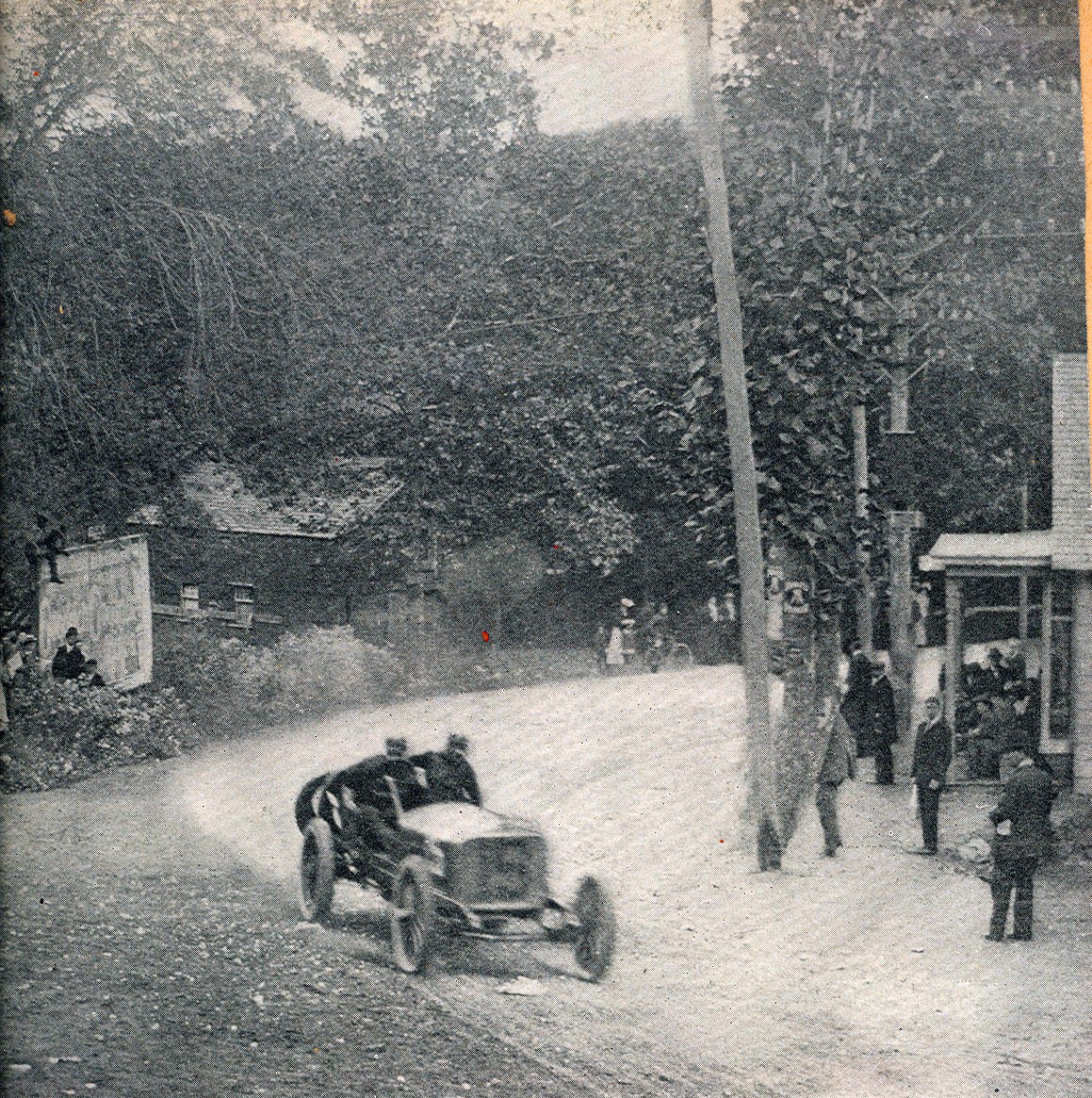
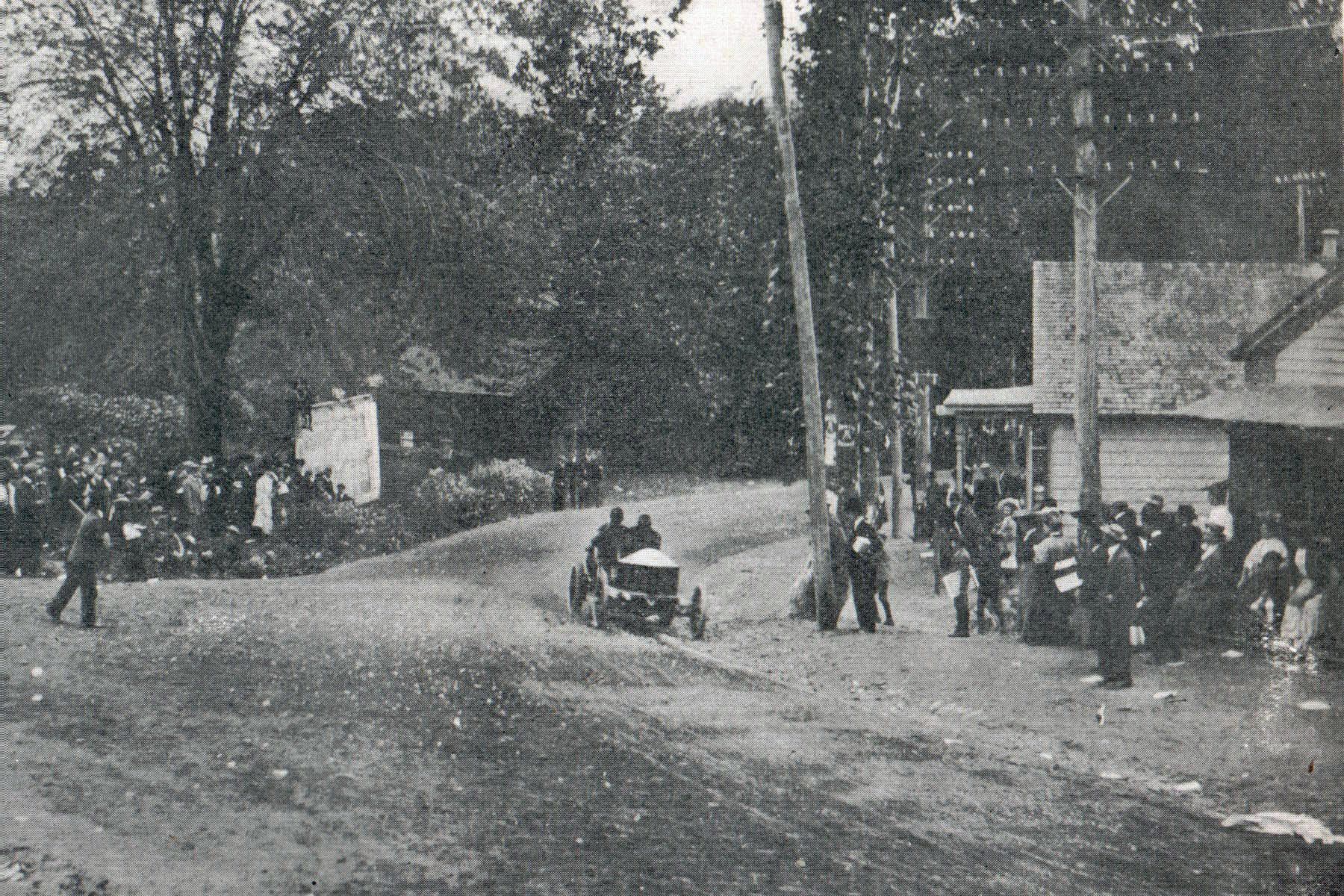
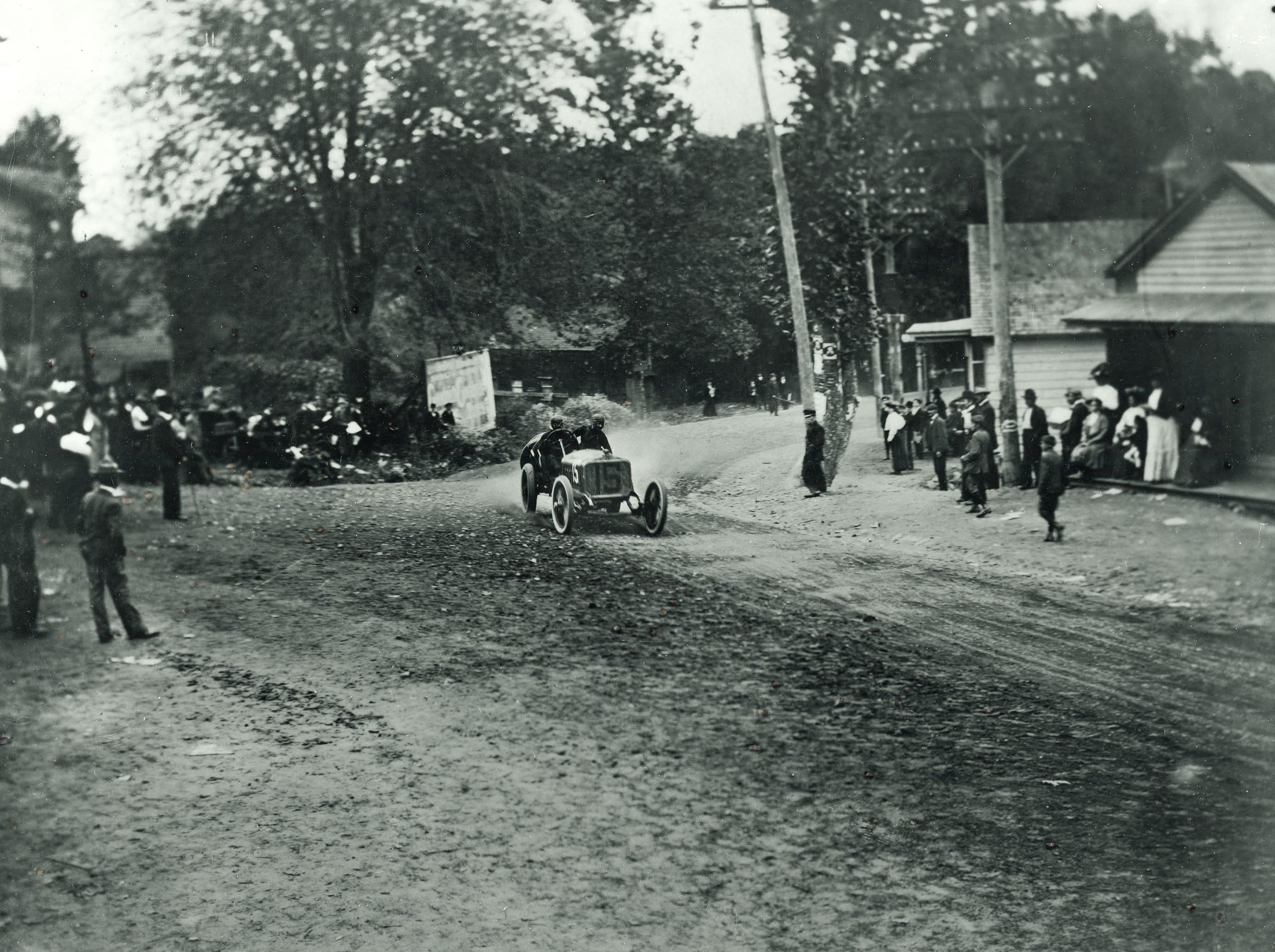
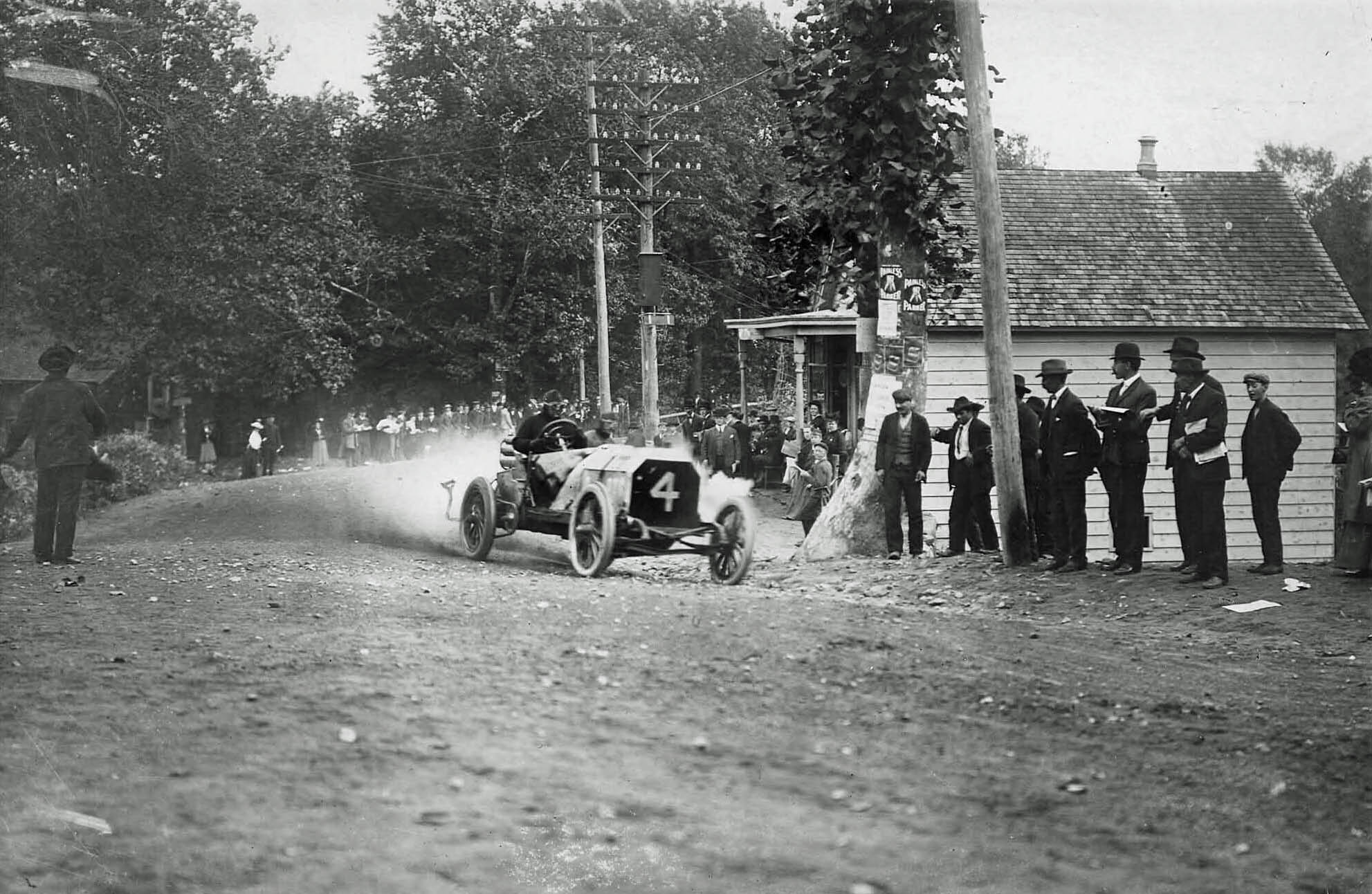
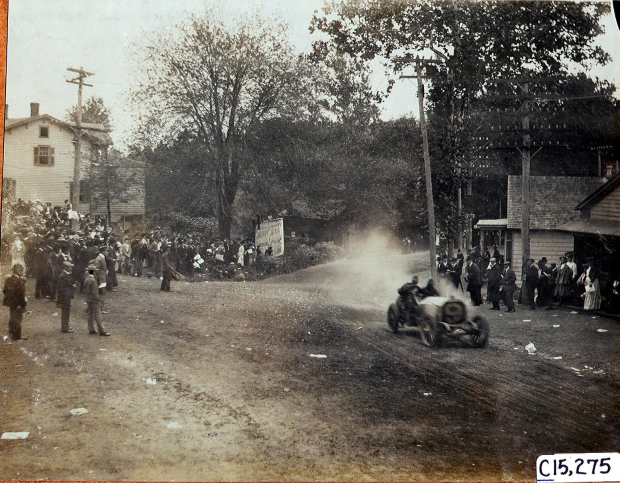
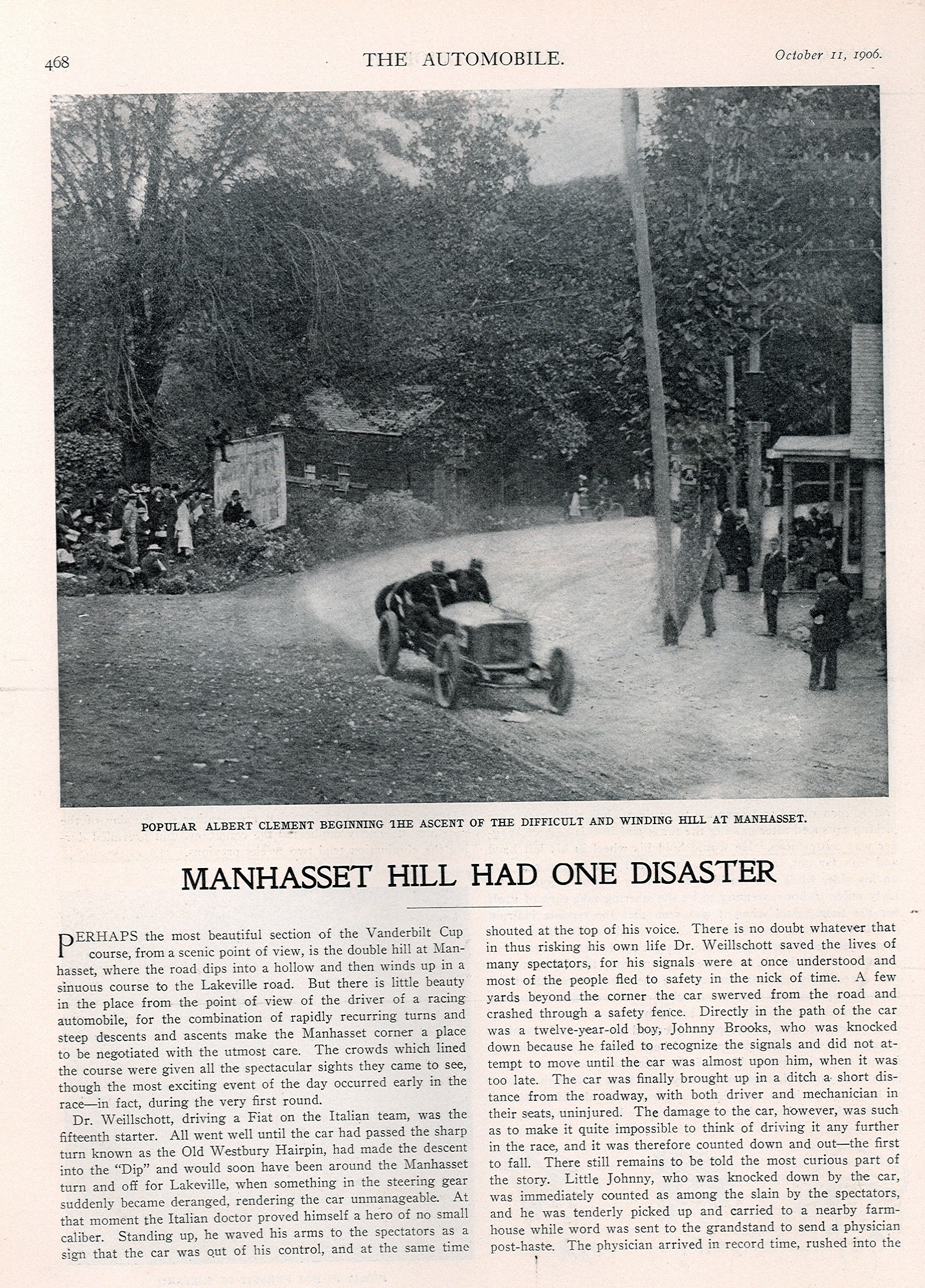
"Perhaps the most beautiful section of the Vanderbilt Cup course, from a scenic point of view, is the double hill at Manhasset, where the road dips into a hollow and then winds up in a sinuous course to the Lakeville Road." The Automobile, Octob17, 1906
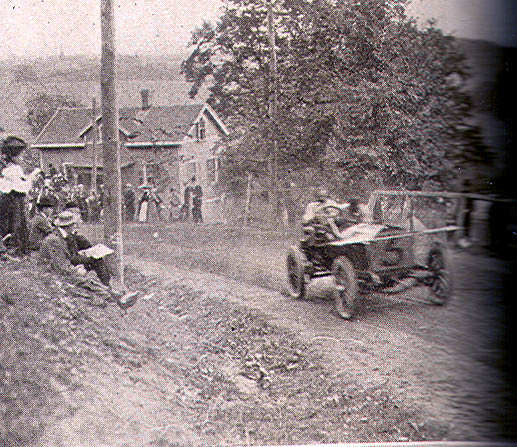
Henry Scheider's Store
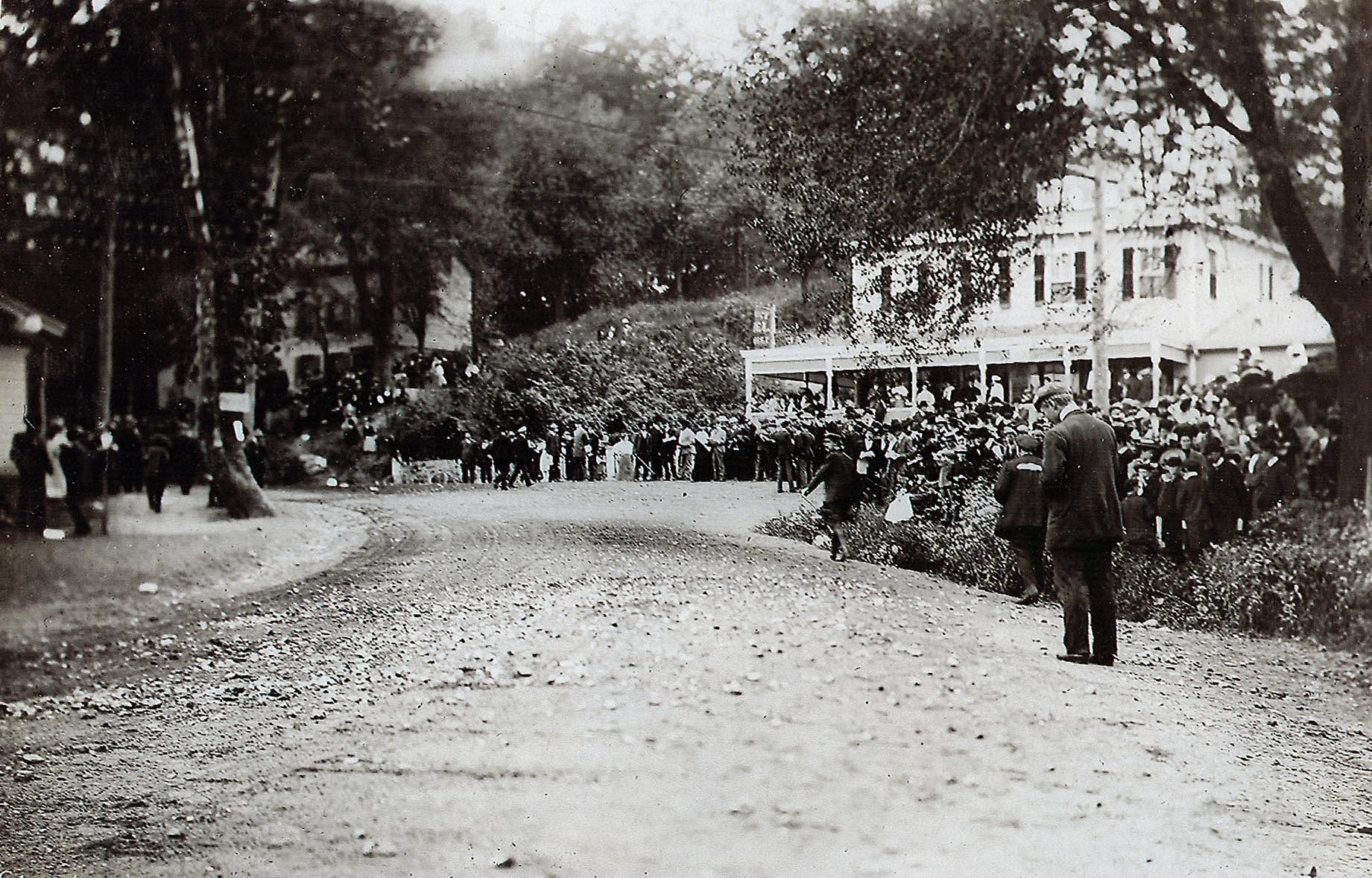
Looking west, a large crowd watched the race in front of Henry Scneider's Store.
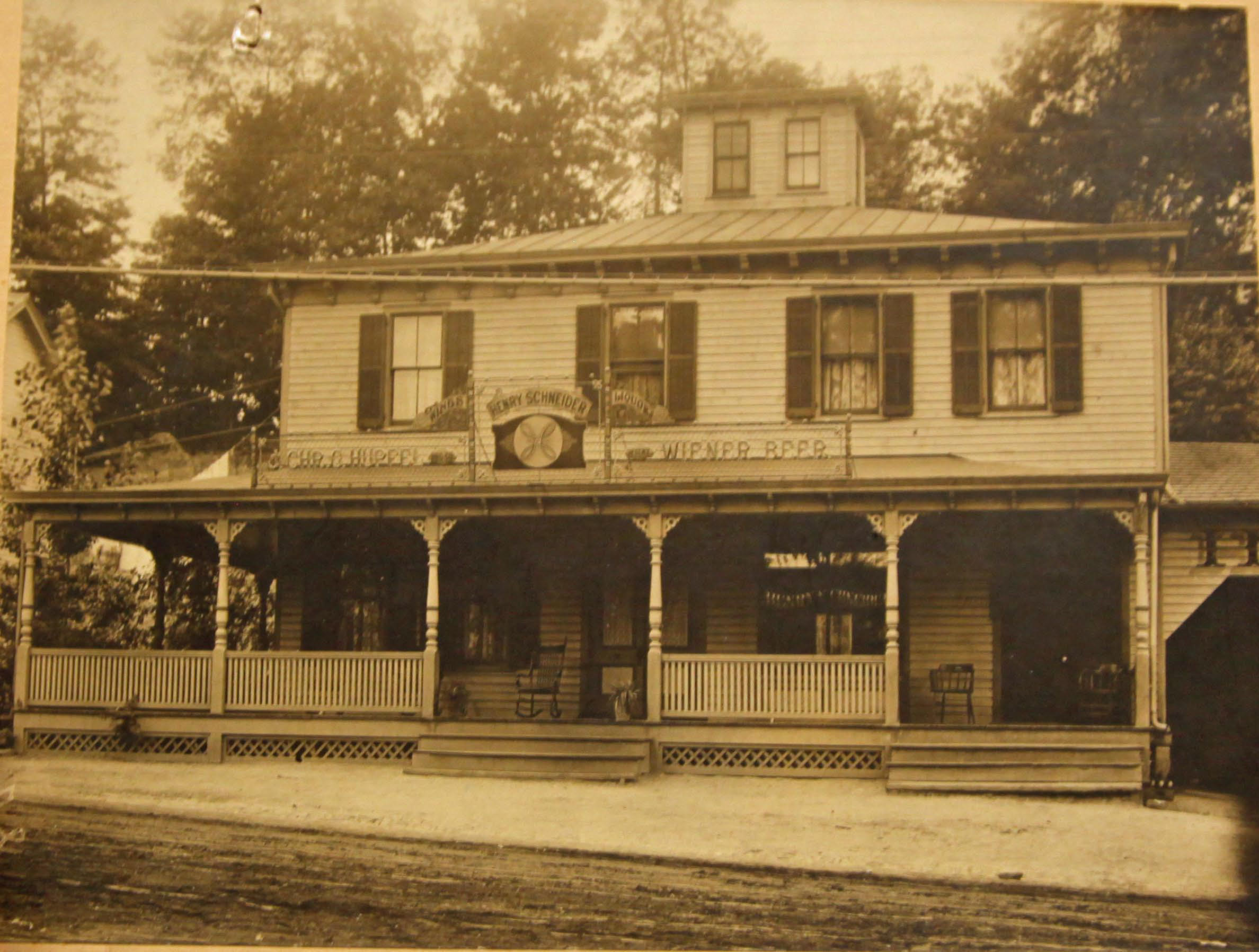
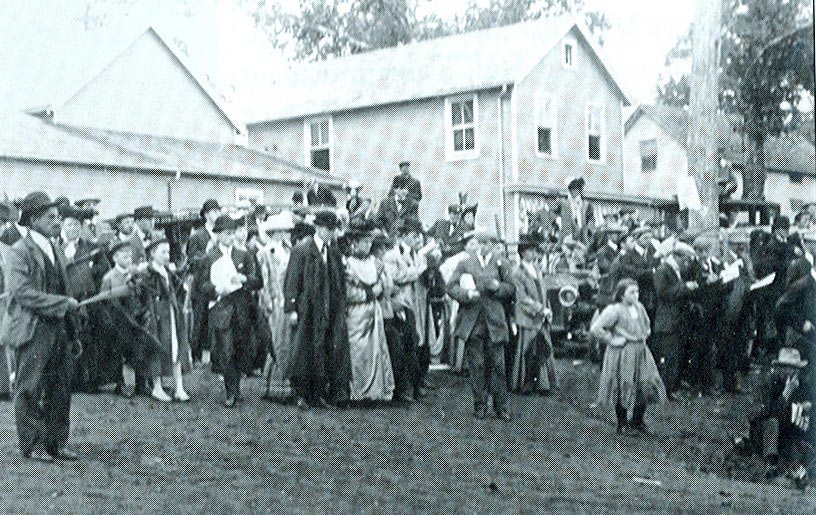
A crowd of spectators on Manhasset Hill watching the race. Courtesy of Wittmer Collection, Cow Neck Peninsula Historical Society)











Comments